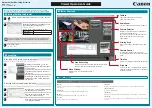
G-16
RAID EzAssist User’s Manual
LAN
Local Area Network, a network of interconnected workstations sharing the
resources of a single processor or server, typically within the area of a small
office building.
Latency
1. The time between the making of an I/O request and completion of the
request’s execution. 2. Short for rotational latency, the time between the
completion of a seek and the instant of arrival of the first block of data to be
transferred at the disk’s read/write head.
Logical Drive States
The state of a logical (system) drive can be either ONLINE, CRITICAL, or
OFFLINE. Notice that the same term “online” is used for both physical and
logical drives.
Logical Drives
A logical drive is equivalent to a “system” drive. Logical drives are presented
to the operating system as available disk drives, each with a capacity
specified by the DAC960 Series controller.
LVD (Low Voltage Differential)
Low Voltage Differential is a form of SCSI signaling that was introduced
with Ultra2 SCSI. Low Voltage Differential allows cable lengths of up to 12
meters (approximately 39 feet) with up to 15 devices. The devices need to be
Ultra2 SCSI LVD devices in order to take advantage of the LVD signalling.
LVD uses data high and data low signal lines to increase transmission
distances over those of single-ended (conventional SCSI signaling). LVD
differs from conventional differential signaling. LVDs advantages are that it
consumes less power and it can sense single-ended devices on the bus and
revert to single-ended signalling. Mylex AcceleRAID, eXtremeRAID and
DACFL controllers are LVD controllers.
M.O.R.E.
Mylex Online RAID Expansion
















































